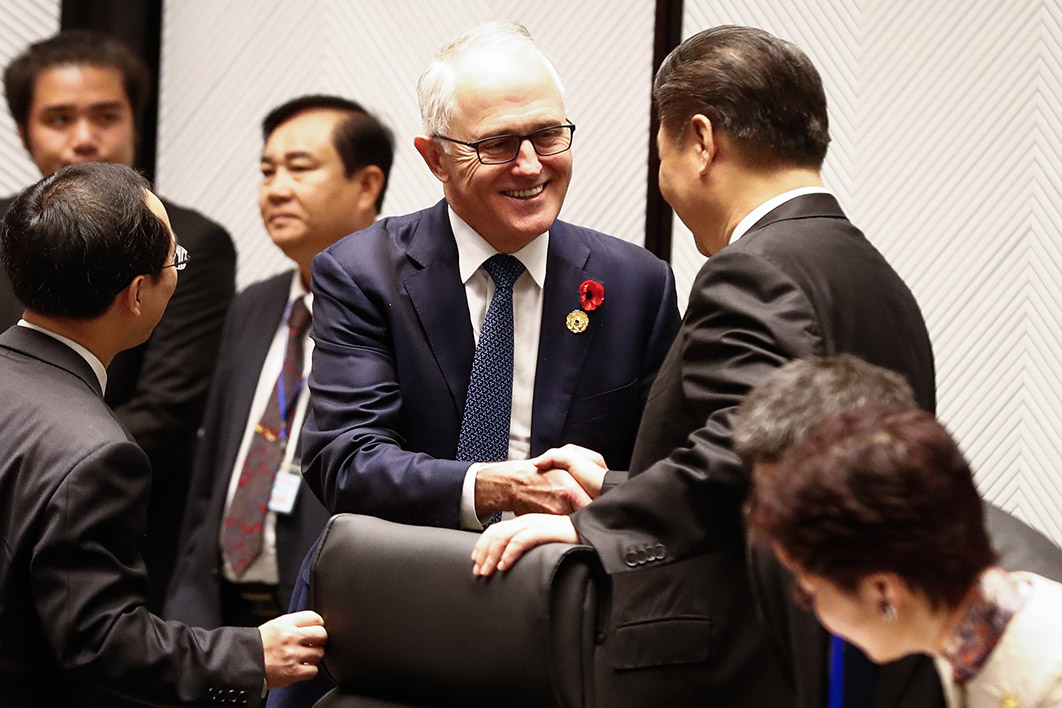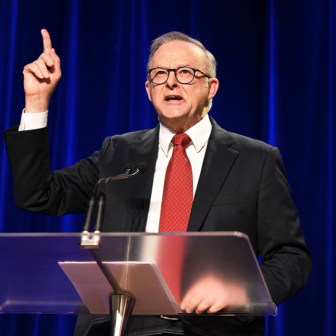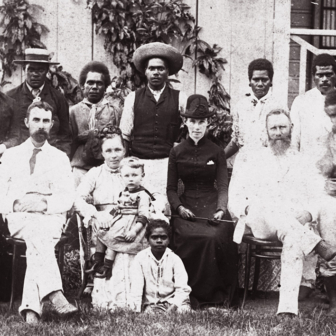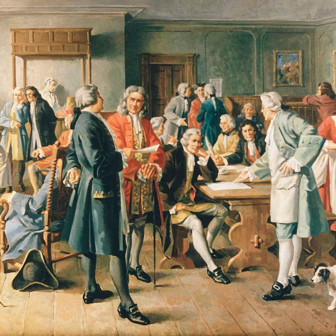An evolving monument of Australian foreign policy has reached its thirteenth volume. Now covering the seven decades from 1950 to 2020, Australia in World Affairs is sustained and shepherded by the Australian Institute of International Affairs. With Cambridge University Press also republishing its twelve predecessors, no longer do you need to haunt secondhand bookshops, as I have, to build the complete set of this triumph of scholarship.
These books worked hard for me as a working journo. When I left newspapers to join the ABC’s international service in 1975, my aim was to write about foreign policy; I’m still doing it, which is a tribute to a lack of career progression: plot and scheme and you, too, can avoid being promoted and keep doing what you love.
I quickly discovered Australia in World Affairs. Before Google, the books were gold; in many ways they still beat the internet for reliability and depth. For a writer on deadline, needing some history, a background perspective, a fact and a line, they were lifesavers. The gold glittered even brighter for a feature or “think piece” (what Americans call “a thumb sucker”). A maxim of the game is “always steal from the best,” and the individual chapters are written by the finest in the business.
With one exception, each volume in the series covers five years. Over time, the historians who dominated the early contributors’ ranks would be eased aside by the international relations and country specialists.
The first four volumes, from 1950 to 1970, were edited by historians Gordon Greenwood and Norman Harper, who set the framework that runs through the series, offering theme and issue chapters along with chapters on Australia’s significant bilateral relationships.
In their preface to the first volume, they noted the problems of multiple authors in an understated line: “A volume by many rather than few hands makes cohesion more difficult.” Any editor who has herded a bunch of writers towards deadline could only marvel at such a mild description of the agony.
By their fourth volume, at the twenty-year mark, Greenwood and Harper were confident in the strength of the formula, writing that “each volume should be both a record and an interpretation, a record sufficiently comprehensive to be of continuing use and an evaluative analysis which would have its own worth as a judgement of policies and procedures as seen at that time.” “Polemics” were explicitly excluded from their surveys of the problems confronting Australia and the policies chosen by Canberra.
Volume five, covering 1971–75, was the only book with a single editor — another historian, W.J. Hudson — who professed to edit with a lighter hand; apart from the eternal editor request for “greater brevity” authors were “left free to write as they chose.” The chapters varied in their judgement on Gough Whitlam and Labor’s “first taste of power in almost a quarter century,” Hudson said, but Whitlam’s foreign policy undoubtedly delivered “years of new emphases, even of some excitement.”
Marking a profound change that runs through all the volumes that followed, Hudson said Australia no longer assumed a natural alignment with its “blood-brothers,” Britain and the United States. Instead, Australia must build alignments of convenience with neighbours who had no “ethnic, cultural or historical bonds.” Making its own way in regional diplomacy and defence, Australia “could not expect any special consideration or tolerance.”
Now the international relations specialists began taking the helm, with volumes 6 and 7 edited by political historian Peter Boyce and IR scholar Jim Angel. This was the point when publishing costs forced the shift from hardback to paperback. The other change was to introduce a title for each volume that would sit above the series title Australia in World Affairs.
Volume 6, Independence and Alliance, recorded how Malcolm Fraser’s government made the US alliance the “cornerstone of Australia’s defence and foreign policies” while also being willing to make “serious divergences from American policy.” The “independence” in the title, Boyce and Angel wrote, reflected “some signs of a mature and measured quest for an independent Australian identity in international affairs.”
Volume 7, Diplomacy in the Marketplace, is the only book to break the five-year publishing rhythm. Boyce and Angel originally aimed to cover from 1981 to 1988, finishing in ’88 to mark the bicentenary of the British settlement of Australia. Not to be. Those notorious cohesion problems meant they missed 1988, so this became the eighties volume, covering 1981 to 1990. “Marketplace” referred to a decade in which Australia grappled with serious balance of trade and foreign debt problems as it responded to Asia’s economic dynamism.
Then comes another golden twin-editor era, a four-book run — volumes 8, 9, 10 and 11 — produced by James Cotton and John Ravenhill, starting with Seeking Asian Engagement, covering the years 1991–95.
The 1996–2000 book came with the smart and cheeky title The National Interest in the Global Era, the first half capturing the pragmatic bilateralism of the Howard government (In the National Interest was the title of Howard’s first foreign policy white paper), the reference to a global era expressing how a self-declared realist government grappled with globalisation, regionalism and multilateral imperatives. Trading on Alliance Security, covering 2001–05, then dealt with the promise of Asia’s economic boom and the alliance response to the terrorist attacks on the United States in September 2001.
My nomination for the best-phrased title in the series is the next one, Middle Power Dreaming. Working off the Aboriginal dreamtime reference, the 2006–10 title expressed Australia’s middle-power hopes and assumptions while also catching the vibe of one of the great lines injected into Oz culture by the movie The Castle: “Tell him he’s dreaming!”
The dream had started to sour by the twelfth volume, Navigating the New International Disorder, edited by Mark Beeson and Shahar Hameiri. The 2011–15 book recorded the weakening of the US-centred security order in East Asia, crumbling global institutions and a more uncertain world order.
The latest volume in Australia in World Affairs reflects the bingo warning, “Thirteen is unlucky for some.” Covering the years 2016–20, it is titled A Return to Great-Power Rivalry.
The editors, Baogang He, David Hundt and Danielle Chubb, observe that competition between the United States and China will dominate international relations for the foreseeable future. They don’t offer chapters on Australia’s major bilateral relationships, as in earlier volumes. Instead, fourteen thematic chapters are grouped under three headings: the domestic politics of Australian foreign policy; global issues; and regional issues. Subjects include climate change, health security, and Australia’s engagement with ASEAN through a Singapore lens. The theme running through most chapters is the US–China dynamic.
Cooperation between the US and China is a functional necessity, the editors write, but confrontation and even war is possible. A lack of hegemonic predictability risks conflict caused by miscalculation or just bad luck:
From 2016 to 2020, Australia increased its security dependence on the United States in an age of great-power rivalry. The United States continued its relative decline, as was evident in the [first] Trump administration’s self-defeating behaviour in sustaining global leadership and its active abdication of such a role, but Australia maintained and even strengthened its relationship with Washington. However, this came at the price of increased uncertainty and vulnerability. As it hewed closely to the United States, Australia became increasingly isolated when dealing with other countries on issues like climate change. China demonstrated an increasing willingness to challenge the US-led “rules-based order” and sought to revise it and promote its own hybrid version of order.
In a chapter on Australia’s foreign policy process, Nick Bisley writes that beyond the Department of Foreign Affairs and Trade and the Defence Department, Australia’s globalised economy and society mean that virtually all branches of the federal government have foreign interactions. Bisley notes that relations with China have for some time been the most challenging and complex aspect of Australian foreign policy, and security has come to overshadow the economic, cultural and social dimensions of relations with China:
Between 2016 and 2020 Australia moved from a policy of active engagement to being one of China’s most vocal critics. Beijing responded with a slow but steady escalation of punitive measures… China’s authoritarian turn further hardened views in Canberra. The approach of the past was not naive — few policy-makers or political leaders had believed that the PRC was likely to liberalise in any meaningful sense — but the authoritarian face the Party presented to the world since Xi Jinping’s ascension was a key reason for Australia’s changed approach to Beijing.
The foreign policy process was unbalanced, Bisley concludes, because Australia had “a dysfunctional political relationship with the region’s most important resident power and its most important export customer.”
In a chapter on Australian public opinion on world affairs, Danielle Chubb and Ian McAlister write that the traditional bipartisanship of policy elites is being overtaken by public debates about what’s happening in Asia and within Australia itself. Polling during the period showed Australians’ views of China changed sharply, with a spike in concern about Chinese interference threatening Australian democratic values. Summing up the big negative turn of opinion against China, Chubb and McAlister comment: “In the absence of a war or a similar existential threat, such a rapid change in public opinion towards a single country is unprecedented.”
Australians passed a nuanced judgement on the first Trump presidency. During 2016–20, Chubb and McAlister write, polling showed the public distinguishing between short-term concerns about Trump and “a long-term understanding that the US military alliance remained the bedrock of Australian defence.”
A chapter on Australia and the international rules-based order discusses Australia’s balancing strategies and Canberra’s “choice” to align with the United States. Huiyun Feng and Kai He write that Australians might want “history to be frozen and US primacy to endure so that the existing international order could remain intact forever.” But Australia’s leaders began to realise that a transition or transformation was inevitable because of China’s challenge.
Australia’s response was to lift its military budget, strengthen security cooperation with the Quad, support ASEAN’s centrality, coordinate an infrastructure coalition in the South Pacific, and campaign against China’s political influence, defined as “sharp power.”
“China was not only seen as a direct challenge to US primacy but also treated as a revisionist power against the whole rules-based order underpinned by US leadership,” Feng and He write. The trouble was that Australia was uneasy about the hostile actions of the first Trump administration towards international institutions and his challenge to the “multilateral trading regime that Australia had preferred and benefited from since World War II.” The Trump challenge was to discard “a trading system based largely on agreed rules with one based purely on negotiating muscle. The United States long championed a rules-based system, but is now discarding it in favour of a power-based system.”
In a chapter on foreign interference Melissa Conley Tyler and Julian Dusting consider new Australian laws banning foreign political donations and the tightening of foreign investment rules to protect critical infrastructure. The legal moves were part of a struggle that took Australia’s relationship with China to its lowest point in decades, they record. Australia was regularly criticised by Chinese “wolf warrior” diplomats, Beijing froze official and ministerial contact, and trade punishment was directed at Australian products including barley, beef, wine and coal:
The consequence of Australia’s foreign interference legislation is that what was previously a normal practice — forming international links — had been stigmatised as something that needed to be administered and regulated. Blanket suspicion of international engagement by individuals, organisations and universities is contrary to Australia’s interests.
In “Reimagining Australia’s Regional Security for the Indo-Pacific Century,” Thomas Wilkins discusses how the “Indo-Pacific” displaced the “Asia-Pacific” in Canberra’s geopolitical understanding. While ostensibly “a neutral geographic descriptor, the Indo-Pacific was also a new arena for superpower rivalry,” he notes. In a rescaled region, “India’s influence was increased while China’s was diluted, more middle powers were brought into the regional orbit, the United States was kept engaged, the region’s maritime emphasis was codified, and Australia was accorded a central position.”
For many Chinese analysts the Indo-Pacific concept had anti-Chinese connotations. “By adopting the new Indo-Pacific mental map,” Wilkins writes, “Canberra put itself directly at odds with Chinese conceptions of regionalism.” Where the Asia–Pacific usage concentrated on economic regionalism and “prosperity” themes, Wilkins observes, the Indo-Pacific has a heavier “security” focus:
Policy-makers continued to talk about prosperity, but it was qualified by a recognition of heightened “strategic competition” and regional rivalry. In this sense, the Indo-Pacific, stripped of its conceptual finessing, was largely a response to the rise of China and its more assertive regional agenda.
Following on from the New International Disorder of volume 12 and the Return to Great-Power Rivalry of 13, the next volume in Australia in World Affairs, covering 2020–25, will cover tough and tense times. As He, Hundt and Chubb conclude, Australia must “learn how to ‘Live with Leviathans’ in the third decade of the twenty-first century.” •
Australia in World Affairs: A Return to Great-Power Rivalry 2016–2020
Edited by Baogang He, David Hundt and Danielle Chubb | Cambridge University Press | 208 pages | $49.95




